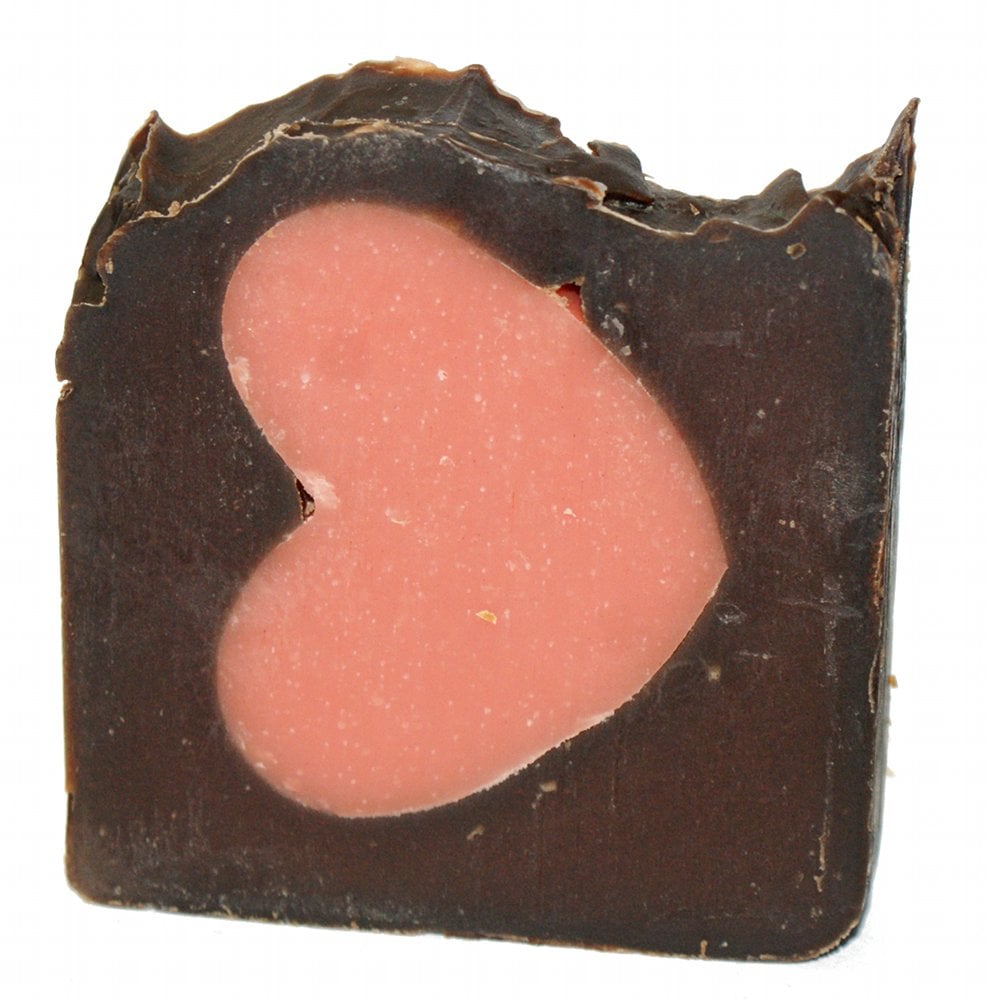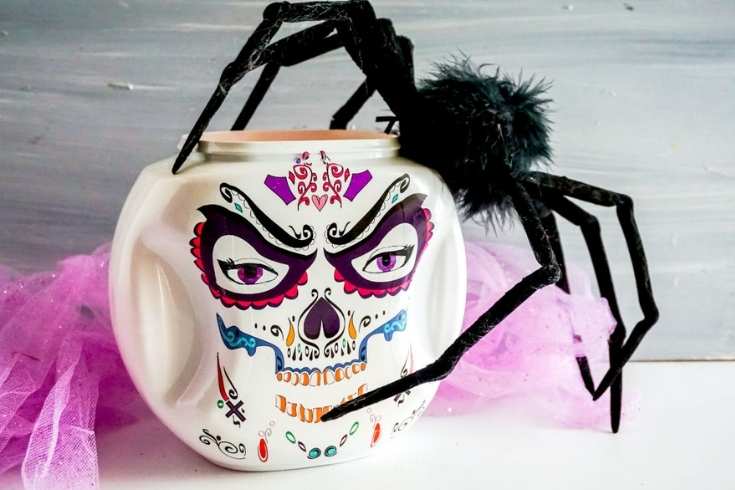How to Make Soap with Heart Shaped Embeds
 Ever wondered how to get shapes embedded into homemade cold process soaps? Basically there are two ways. I created the soap pictured here some time back. The red heart embed was scented with a red currant fragrance oil while the surrounding soap was scented with a red velvet cake fragrance oil.
Ever wondered how to get shapes embedded into homemade cold process soaps? Basically there are two ways. I created the soap pictured here some time back. The red heart embed was scented with a red currant fragrance oil while the surrounding soap was scented with a red velvet cake fragrance oil.
The most common way to include shaped embeds in your soap is to use a tube mold in the shape you desire. To create soap with a heart embed you can use a Heart Shaped Bread Tube Mold – make sure it is stainless steel, not aluminum – or a Silicone Heart Shaped Tube Mold. To use a non-silicone mold, you will have to line your molds so you are able to easily remove your soap. Sometimes getting soaps out of these types of mold can be difficult. While the size is perfect, you may want to opt for a silicone mold for easier removal.
To create this handmade heart embedded soap, simply make your first batch of cold process soap that will serve as your heart embed and pour into the heart shaped tube mold of your choice. You would then unmold the heart shaped soap after 24 hours. Once you have your heart shaped soap you can create your second batch of soap that you will be placing the heart into. Simply line a loaf mold and pour a small amount of soap along the bottom of the mold. Next, place the length of the heart soap down the mold on top of the freshly poured soap, then pour the remaining soap around the heart. Be sure to tap the mold onto the counter several times to make sure the soap is evenly distributed around the heart embed so there will be no gaps from air bubbles around the heart. Cover and insulate for 24 hours before unmolding and slicing into bars.
Alternately, if embedding hearts into your soap is an afterthought or you don’t have a mold handy, you can use cookie cutters. Simply use a heart shaped cookie cutter to cut out heart shapes from bars of soap you are reusing or from a square of handmade soap. Then you would simply line your hearts up in your lined mold one against the other then pour your fresh batch of soap on top.
These handmade heart embed soaps make lovely diy wedding favors. They also serve as a great homemade gift idea for Valentine’s Day or anniversaries. Also be sure to check out my tutorial on making decorative soap bars with random circles as well as how to make soap with an exfoliating strip. Looking for soap recipes? Try out my skin loving cold process handmade soap recipe!
For more soapmaking tips, techniques and recipes, be sure to follow my Bath & Body Board on Pinterest!




3 Comments
Debbie May
June 22, 2013 at 8:52 am
I love this tutorial. Thanks for sharing!
helenbebbington
November 15, 2013 at 8:00 am
Hi my names Helen and I make cold process soap ,I have done a mistake when making my last batch and wondered if you have done the same or know anyone who could suggest something
I was duplicating a recipie to make 2000g and my caustic saoda for 1 was 124g and iv doubled everything and got distracted and forgot to double caustic soda ,I was thinking to make just a plaine olive oil base but add two lots of caustic soda and then mix as normal ,then add water to the batch gone wrong to make it licquid and slowly add this in to the new soap ,,im not sure if this will work but open to advice and suggestions
thanks
Rebecca D. Dillon
November 15, 2013 at 5:40 pm
It’s hard to say without knowing the exact recipe with all ingredients. Also while you can double the oils in a recipe, you must run the new larger version back through a lye calc to get the new lye and water amounts needed. I’m not really sure about saving the batch as I don’t have a clear understanding of what happened or what you’re trying to do with the bad batch. I would not double the lye in a new recipe and combine it with the more liquid? batch. Did the first batch you made ever reach trace?
Comments are closed.